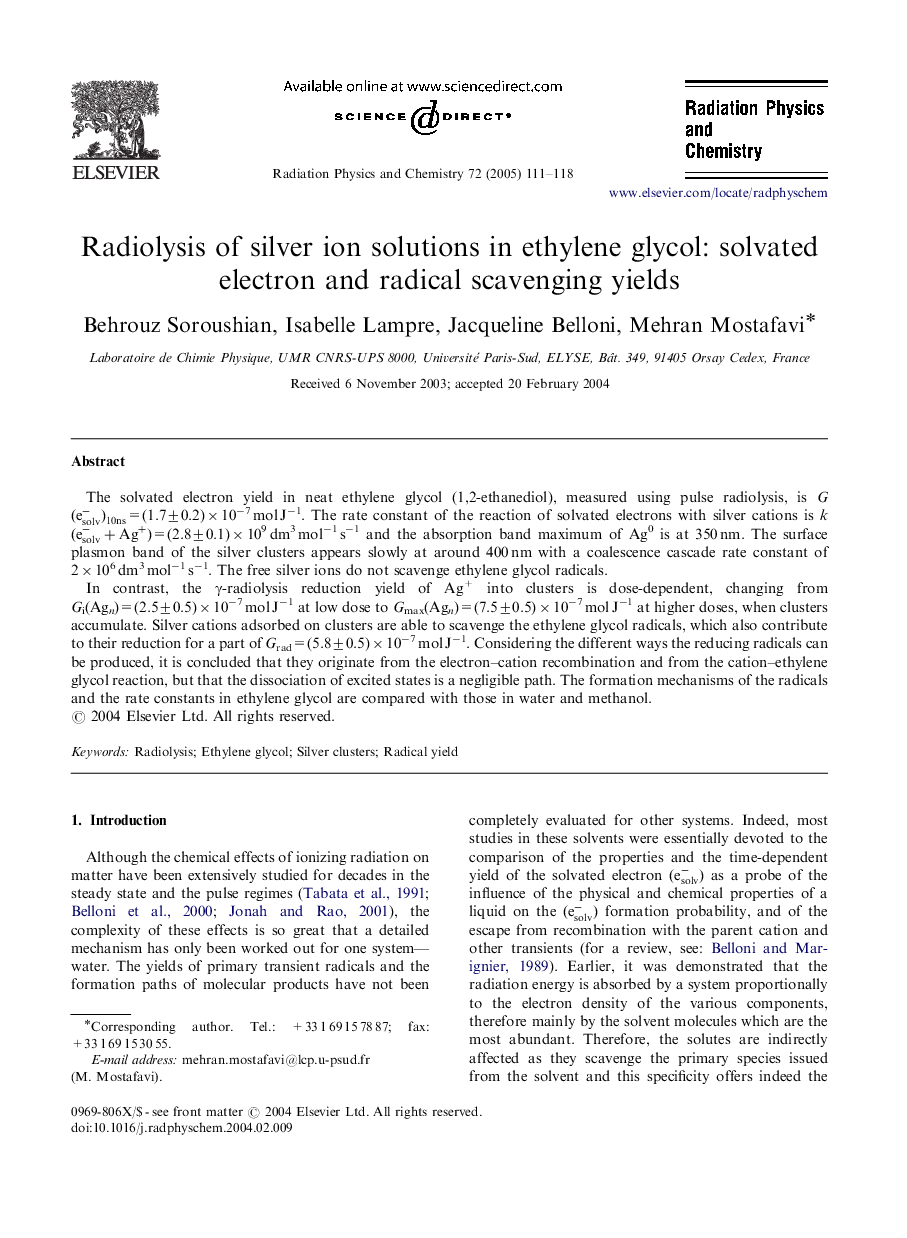| Article ID | Journal | Published Year | Pages | File Type |
|---|---|---|---|---|
| 9876350 | Radiation Physics and Chemistry | 2005 | 8 Pages |
Abstract
In contrast, the γ-radiolysis reduction yield of Ag+ into clusters is dose-dependent, changing from Gi(Agn)=(2.5±0.5)Ã10â7 mol Jâ1 at low dose to Gmax(Agn)=(7.5±0.5)Ã10â7 mol Jâ1 at higher doses, when clusters accumulate. Silver cations adsorbed on clusters are able to scavenge the ethylene glycol radicals, which also contribute to their reduction for a part of Grad=(5.8±0.5)Ã10â7 mol Jâ1. Considering the different ways the reducing radicals can be produced, it is concluded that they originate from the electron-cation recombination and from the cation-ethylene glycol reaction, but that the dissociation of excited states is a negligible path. The formation mechanisms of the radicals and the rate constants in ethylene glycol are compared with those in water and methanol.
Related Topics
Physical Sciences and Engineering
Physics and Astronomy
Radiation
Authors
Behrouz Soroushian, Isabelle Lampre, Jacqueline Belloni, Mehran Mostafavi,
